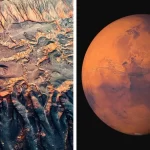Key Takeaways:
- NASA’s Voyager 1 spacecraft, the farthest from Earth, reactivated thrusters unused since 1980.
- Previously, fading thrusters jeopardized communications; new ones may extend Voyager’s mission.
- The trajectory correction maneuver (TCM) thrusters, last used in 1980, were successfully retested.
- Voyager 1, in interstellar space, transmitted results 13 billion miles away, confirming success.
- Revived thrusters offer potential for extended data transmission from beyond the Solar System.
NASA’s Voyager 1, humanity’s most distant spacecraft, recently marked a historic event by reigniting thrusters that lay dormant since 1980. These thrusters were crucial for the spacecraft to orient its antenna towards Earth. The revival was a critical move, as the aging thrusters were becoming less reliable, posing a risk to future communications with Voyager 1.
Scientists at NASA’s Jet Propulsion Laboratory in California discovered that an alternate set of thrusters, known as the trajectory correction maneuver (TCM) thrusters, could be utilized to perform this task, potentially extending the spacecraft’s operational life by two to three years.
Originally employed to navigate past Jupiter and Saturn as Voyager 1 embarked on its journey out of the Solar System, the TCM thrusters had remained untouched since the last planetary encounter with Saturn in November 1980.
After 37 years of dormancy, the team initiated a test to reactivate these thrusters. The results of the test, transmitted from a staggering distance of 13 billion miles, reached Earth after 19 hours and 35 minutes. The successful reactivation was confirmed on November 29.
Although the TCM thrusters share a similar size and functionality with their counterparts, they require an additional heater to be activated, consuming more power. Consequently, they will be utilized until the available power for the heaters depletes, at which point the original thrusters will be reinstated.
This achievement bodes well for enthusiasts of the Voyager 1 mission, as it ensures a prolonged data transmission phase from the edges of the Solar System. The team also plans to conduct similar tests on the Voyager 2 spacecraft, which is expected to exit the Solar System in the coming years.


